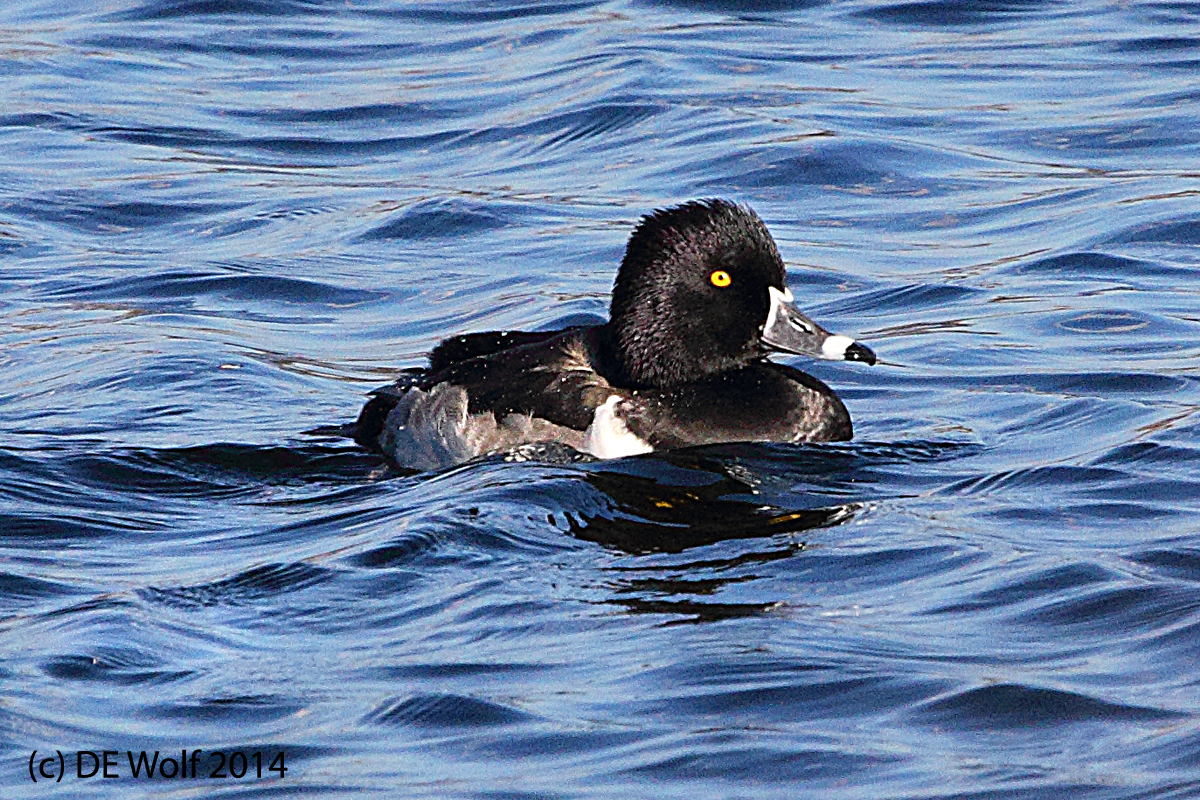Last Thursday on my lunch time walk I brought my big lens in the hopes of photographing some juvenile double crested cormorants and ducks on Fresh Pond. I wound up taking pictures of ring-necks at essentially the same site as the image I took with my 70 to 200 mm zoom and posted on October 19th. It gave me the opportunity to contemplate the relative virtue of the two lens when it comes to photographing birds.
The 100 to 400 mm zoom is cumbersome, and you have to consciously say to yourself: “Self, I’m going out with my lens and monopod to photograph birds.” But in the end, and despite the fact that the 70 to 200 mm lens is just a bit technically sharper (It has a superior modulation transfer function), focal length trumps all. So I think that the photograph of this Thursday (Figure 1) is superior at least in terms of image sharpness.
I learned another interesting point on Thursday. When you’re walking around with a monstrous lens and photographing birds people think you really know. People kept stopping and asking me about the identity of the birds that I was photographing and about their migratory behaviour. As it turns out I do have a pretty good knowledge of the birds. But a major virtue of doing it with a camera is that you get to go home and pull out your Peterson Guide and cruise the internet to check your facts.
My internet searches this time rewarded me with a tidbit of understanding. I have been wondering why the name, “ring-necked,” when there is no ring to be seen. It turns out that there is a faint brown ring around the male’s neck that is so seldom seen in the field as to pretty useless as an identifier.
Canon T2i with EF100-400mm f/4.5-5.6L IS USM at 370 mm, ISO 800, Aperture-priority AE mode 1/1250th f/8.0 with no exposure compensation.

